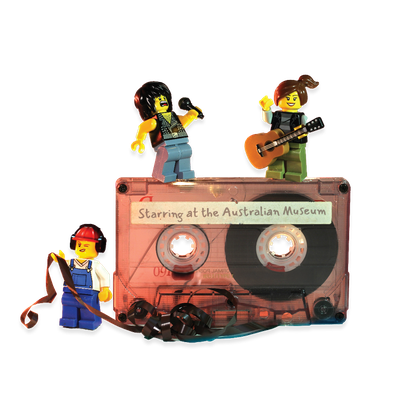Your search returned 2115 results
By Page Type
By Tag
- fish (966)
- blog (696)
- fishes of sydney harbour (401)
- First Nations (299)
- Blog (236)
- AMRI (169)
- archives (164)
- Eureka Prizes (146)
- Aboriginal and Torres Strait Islander (135)
- insect (126)
- Ichthyology (124)
- geoscience (109)
- minerals (102)
- climate change (99)
- podcast (94)
- Fish (91)
- Anthropology (89)
- International collections (80)
- Minerals Gallery (78)
- wildlife of sydney (78)
- Labridae (77)
- frog (74)
- gemstone (70)
- photography (66)
- history (64)
- Mollusca (60)
- gem (59)
- staff (59)
- Birds (56)
- Gems (56)
- Indonesia (56)
- education (56)
- shark (55)
- AMplify (54)
- people (53)
- earth sciences (50)
- exhibition (50)
- past exhibitions (50)
- Gobiidae (48)
- sustainability (46)
- Pomacentridae (45)
- Serranidae (44)
- lifelong learning (42)
- science (42)
- Earth and Environmental Science (41)
- Syngnathidae (41)
- Ancient Egypt (40)
- Bali (40)
- bird (40)
- dangerous australians (40)
-
Courtney Birksmith
https://australian.museum/get-involved/staff-profiles/courtney-birksmith/Courtney Birksmith is a Technical Officer – Digitising (Petrology) at the Australian Museum.
-
Joycelyn Goh
https://australian.museum/get-involved/staff-profiles/joycelyn-goh/Joycelyn Goh is a Digitising Technical Officer in Ichthyology and Marine Invertebrates at the Australian Museum.
-
Jasper Hiller
https://australian.museum/get-involved/staff-profiles/jasper-hiller/Jasper’s background is in coastal ecology, and he is currently completing his PhD on human impacts on sandy beach invertebrates. He is passionate about the conservation and restoration of coastal ecosystems.
-
Dr Thais Sasso
https://australian.museum/learn/collections/natural-science/herpetology/herpetology-staff-fellows-and-associates/thais-sasso/Dr Thais Sasso is a Research Assistant at UNSW
-
Become a Member
https://australian.museum/get-involved/join/members/With exclusive perks, including free tickets to RELICS, an Australian Museum Membership opens the door to even more discovery.
-
Media Centre
https://australian.museum/about/organisation/media-centre/Discover the latest news about the Australian Museum and Australian Museum Research Institute. The Media Centre also provides information, images and expert comment on scientific and cultural research, exhibitions and wider Museum activities.
-
Things to do in Sydney - Australian Museum
https://australian.museum/visit/whats-on/things-to-do-in-sydney/Things to do in Sydney - visit the Australian Museum!
-
Location and access
https://australian.museum/visit/access/Plan your visit to the Australian Museum in Sydney with information on accessibility features and amenities.
-
Food and drinks
https://australian.museum/visit/food/Enjoy a range of food and drinks at Bistro Gadi on Level 4 or our kiosk on Level 2.
-
Museum mobile apps
https://australian.museum/visit/mobile-apps/From our citizen science to augmented reality games, treasure hunts and audio exhibition tours, discover our mobile apps.
-
Discover more
2025 Australian Geographic Nature Photographer of the Year
Special exhibition
Free entry
Now open -
Discover more
Unfinished Business
Special exhibition
Free entry
Now open -
Discover more
Wansolmoana
Permanent exhibition
Free entry
Open daily -
Find out more
Burra
Permanent kids learning space
Free entry
10am - 4.30pm![]()
-
Discover more
Minerals
Permanent exhibition
Free entry
Open daily![]()




